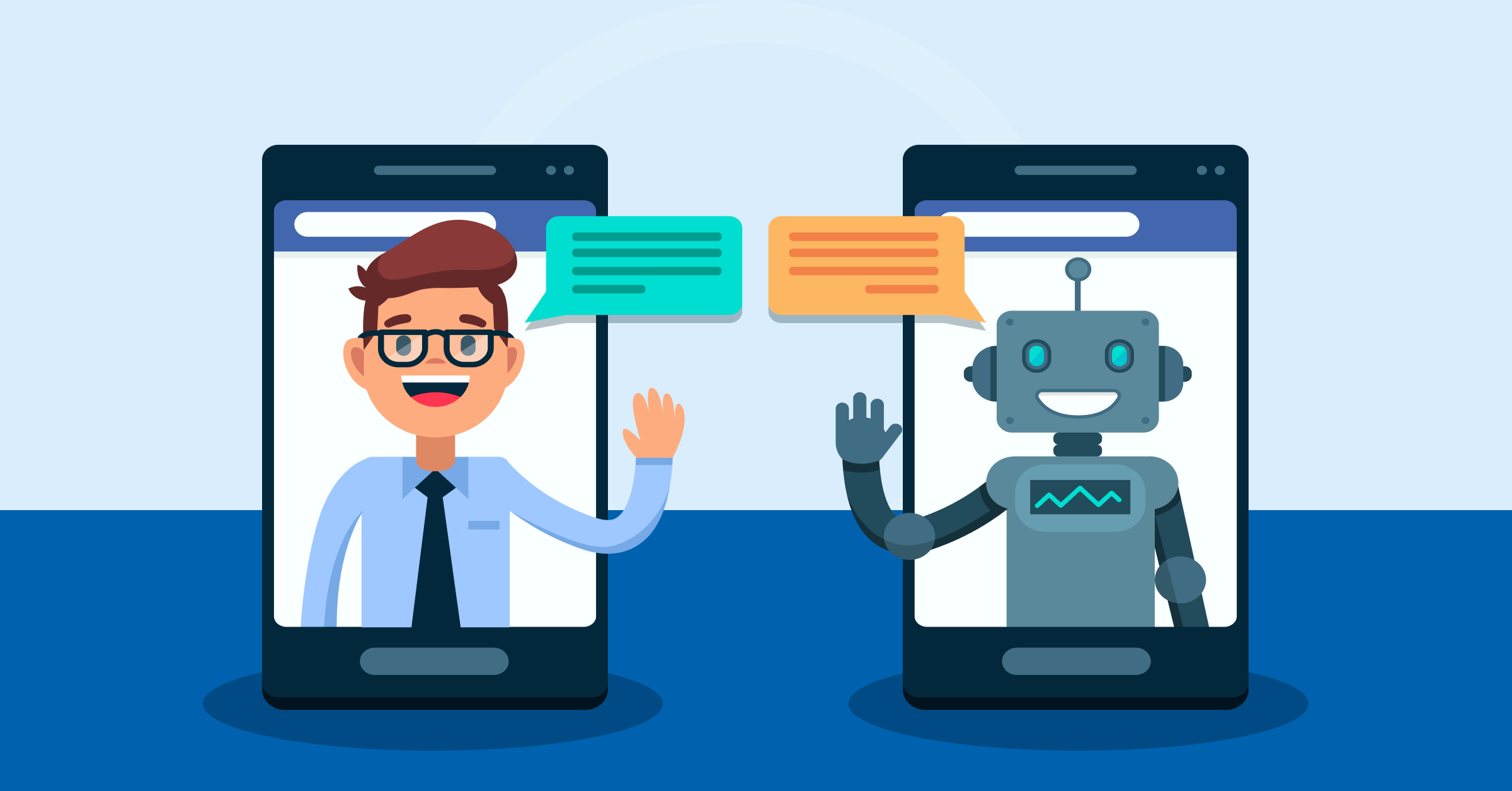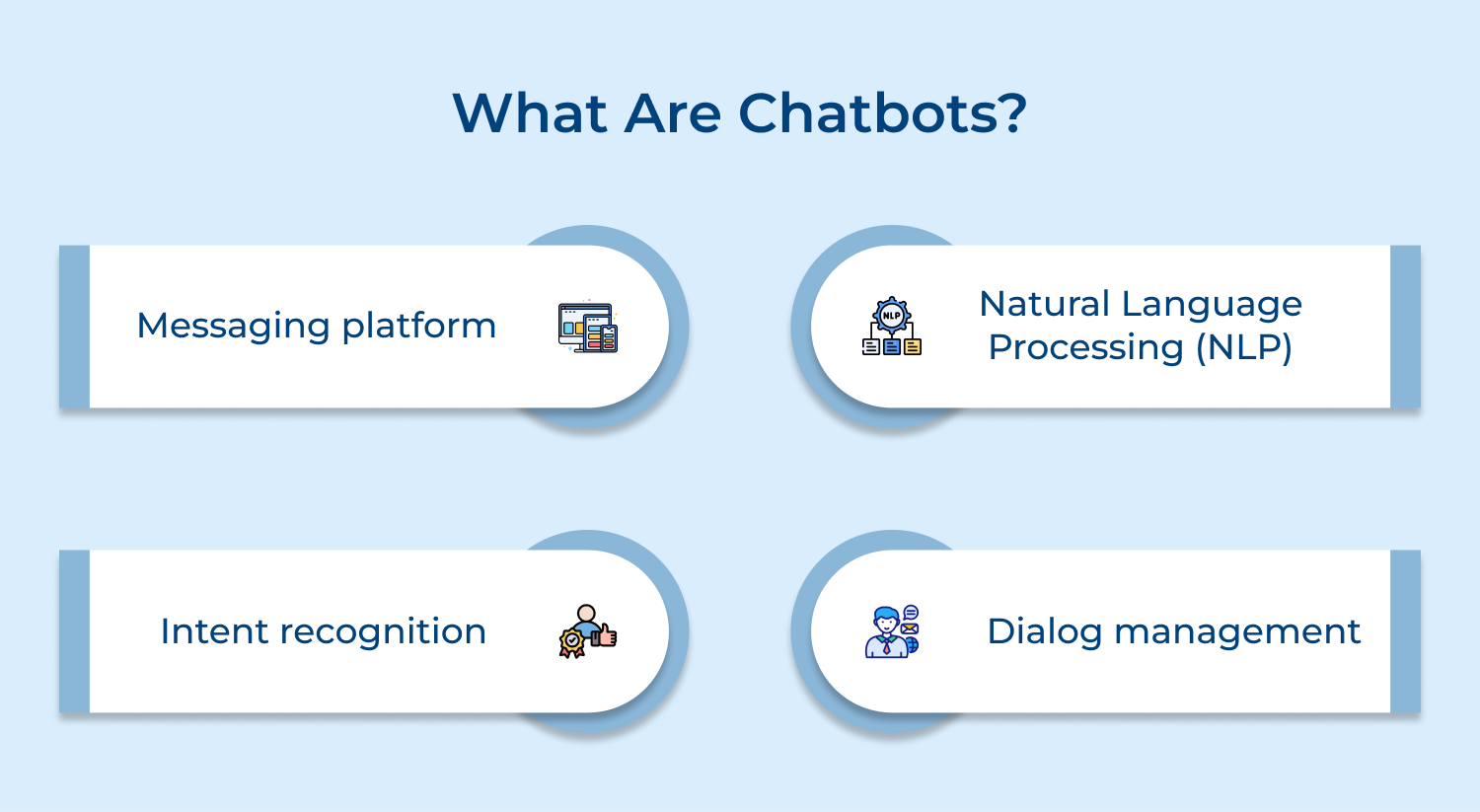Key components:
1. Messaging platform: An interface that initiates human interactions that sound natural. It can be a website chat window, a messaging app like Facebook Messenger or WhatsApp, or a voice-controlled device like Amazon Echo or Google Home.
2. Natural Language Processing (NLP): NLP is a technology that enables chatbots to understand and interpret human language. It allows chatbots to recognize and respond to user inputs in a way that feels conversational.
3. Intent recognition: Intent recognition is the ability of a chatbot to understand the purpose or goal behind a user’s message. By analyzing the context and language of the user’s input, the chatbot can determine the user’s intent as well as provide an appropriate response.
4. Dialog management: Dialog management manages the flow of conversation between the user and the chatbot. It involves keeping track of the context of the conversation, remembering previous interactions and guiding the conversation towards a successful outcome.
5. Integration with backend systems: Chatbots are often connected to backend systems like customer databases, e-commerce platforms or CRM systems. This integration allows chatbots to access and retrieve relevant information to provide personalized responses to users.
6. Machine learning algorithms: Machine learning algorithms enable chatbots to learn and improve their responses over time. Interpreting user interactions as well as feedback really helps chatbots to optimize their performance and provide more accurate responses.
What is Conversational AI?
Conversational AI is a more sophisticated term for what we call chatbots or virtual agents. It is an emerging technology that uses artificial intelligence to enable seamless conversations between humans and machines.
This technology is reshaping how customer service, e-commerce and many other industries work by providing personalized, real-time assistance to users.







